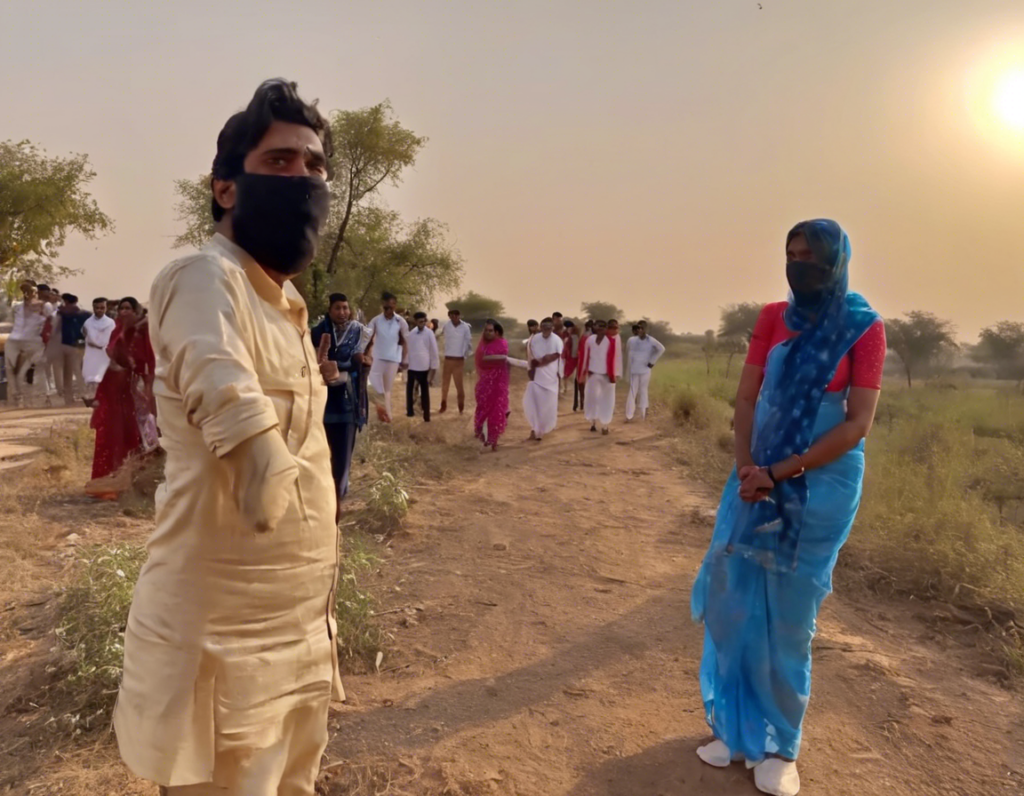
Introduction
The recent viral video from Pratapgarh, Rajasthan, has sparked controversy and debate across the nation. The video, which shows a group of individuals brutally assaulting a man, has raised questions about law enforcement, vigilantism, and the role of social media in justice. As the facts surrounding the incident remain murky, it is essential to delve deeper into the nuances of the case and understand the broader implications it may have on society. In this article, we will dissect the Pratapgarh viral video, explore the various angles of the story, and analyze the underlying issues at play.
Context of the Incident
The viral video from Pratapgarh depicts a gruesome scene wherein a man is tied to a tree and beaten by a group of individuals. The reasons behind the assault remain unclear, with conflicting reports emerging from various sources. Some claim that the man was targeted for alleged criminal activities, while others suggest that it was a case of mistaken identity. The lack of concrete information has only fueled speculations and conjectures, further complicating the matter.
Legal Ramifications
The incident raises important legal questions regarding vigilantism, mob justice, and due process. Vigilantism, defined as taking the law into one’s own hands to mete out justice, is a dangerous phenomenon that undermines the rule of law and can lead to chaos and violence. In this case, the perpetrators bypassed the legal system and resorted to violence as a means of retribution. Such actions are not only illegal but also pose a severe threat to the fabric of society.
Role of Social Media
The rapid spread of the Pratapgarh viral video on social media platforms has once again underscored the power and influence of online networks in shaping public opinion and driving social change. While social media can be a force for good, enabling the dissemination of information and the mobilization of communities, it can also be a double-edged sword, amplifying misinformation and inciting violence. In the case of the Pratapgarh incident, the viral video served as a catalyst for outrage and condemnation, prompting calls for swift justice and accountability.
Community Response
The reaction to the Pratapgarh viral video has been mixed, with some condemning the act of vigilantism and calling for the arrest of the perpetrators, while others have expressed support for the actions taken against the man in the video. The incident has laid bare the deep-seated divisions within society, highlighting the stark differences in values, beliefs, and perceptions of justice. Moving forward, it is imperative for communities to engage in constructive dialogues and foster a culture of empathy and understanding to prevent such incidents from occurring in the future.
Addressing Root Causes
To prevent similar incidents from happening in the future, it is crucial to address the root causes that lead to vigilantism and mob justice. Poverty, lack of education, and poor law enforcement are often cited as underlying factors that contribute to the breakdown of social order and the rise of vigilante justice. By investing in education, improving social services, and strengthening the justice system, society can work towards creating a more just and equitable environment where the rule of law prevails.
Conclusion
The Pratapgarh viral video serves as a stark reminder of the complex challenges facing society today, from vigilantism and mob justice to the role of social media in shaping public discourse. As we grapple with the aftermath of this incident, it is essential to reflect on the underlying issues at play and work towards creating a more just and compassionate society. By fostering a culture of respect, understanding, and solidarity, we can build a future where justice is served through the legal system, not through acts of violence.
Frequently Asked Questions (FAQs)
Vigilantism is illegal in India and is punishable under various sections of the Indian Penal Code. Taking the law into one’s own hands can lead to serious consequences, including criminal charges and imprisonment.
What role does social media play in spreading viral videos of violent incidents?
Social media can amplify the reach and impact of viral videos, spreading them rapidly across online platforms and shaping public perception. While social media has the potential to raise awareness and drive change, it can also fuel tensions and incite violence.
How can communities work together to prevent vigilantism and mob justice?
Communities can foster dialogue, promote tolerance, and strengthen trust in institutions to prevent vigilantism. By engaging in constructive conversations and addressing underlying social issues, communities can build a more cohesive and resilient society.
What steps can law enforcement take to address incidents of vigilantism effectively?
Law enforcement agencies can enhance their responsiveness, improve community relations, and educate the public about the dangers of vigilantism. By enforcing the rule of law and upholding due process, law enforcement can deter acts of vigilantism and ensure justice is served through legal channels.
What long-term strategies can policymakers implement to combat vigilantism in society?